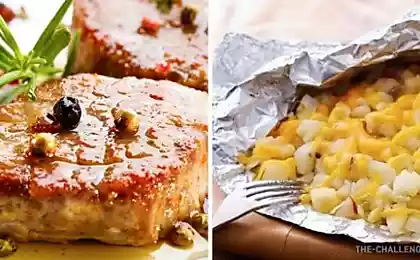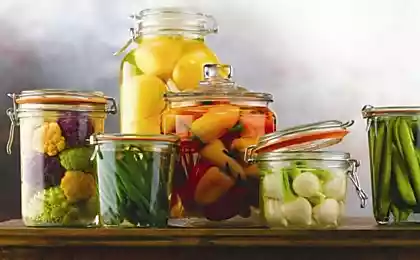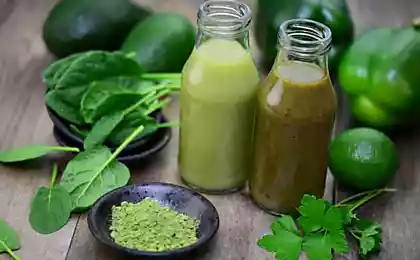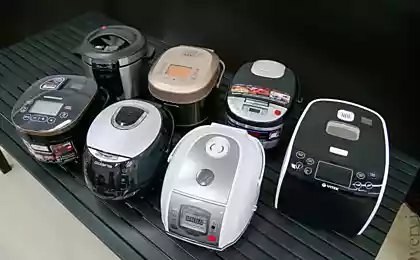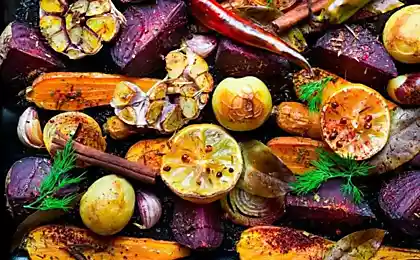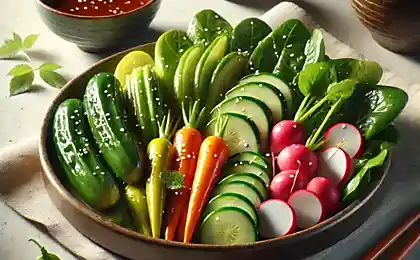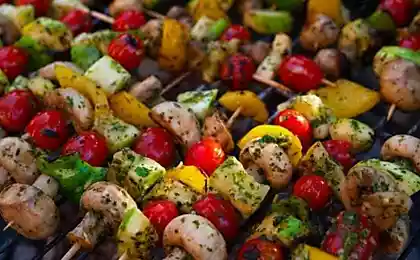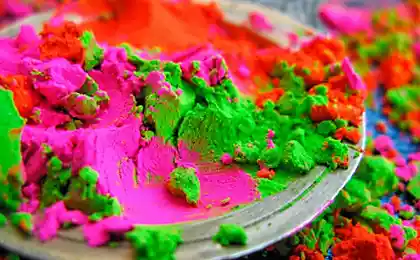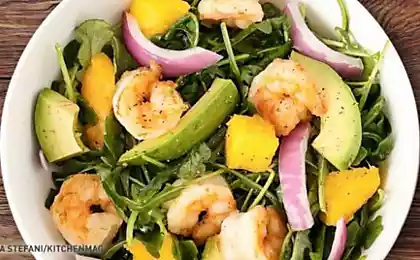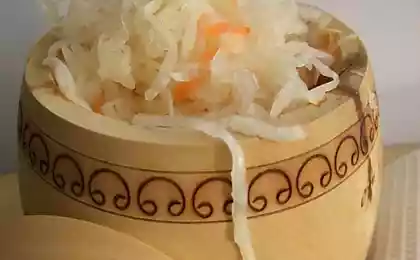771
How to keep bright emerald color when cooking green vegetables?
Broccoli, asparagus, peas, green beans... These and many other vegetables have one thing in common: “caught” in the process of making the same bright emerald color, you will make it so that on a plate they will look even more appetizing than before the heat treatment – case for vegetables is not that unprecedented, but uncommon (with tomatoes, for example, this trick will not work).Therefore, let's understand how to maintain the proper color when cooking green vegetables?
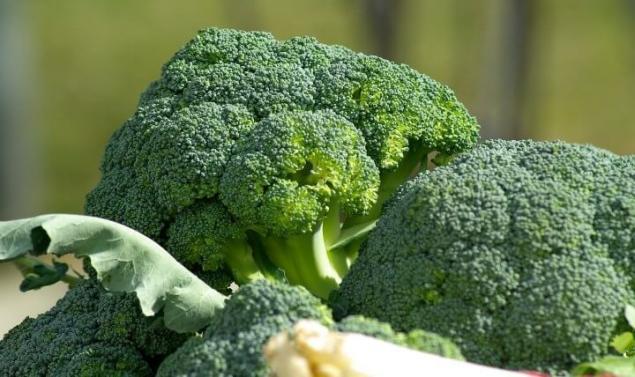
A large part of the sources describes the following conditions to preserve color of green vegetables:
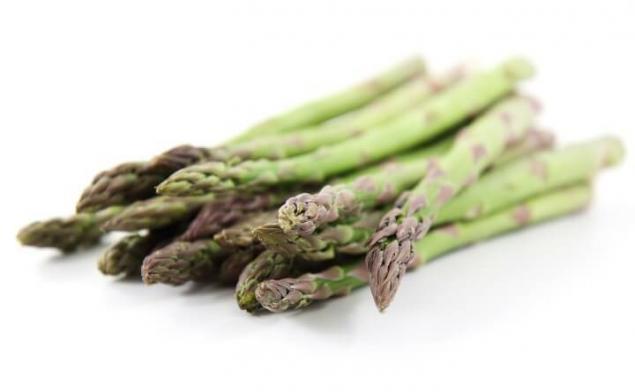
Guided by these simple rules, green vegetables successfully cook more than one generation of cooks and Housewives around the world. But a tireless experimenter and rebel Heston Blumenthal did my research and came to the conclusion that most of the above conditions is no more than a myth.
To ensure that the vegetables kept green, water salting is not necessary. Well, I committed the cardinal sin is his statement. All in one voice say that salted water helps to retain the green color of vegetables, and anyone who puts this question, one should throw stones and not only.In life people are the key turning points. I confess that for me this turning point was cooking green beans. In the Orthodox culinary teachings, green vegetables should be submerged in plenty of boiling heavily salted water, so that added veggies do not stop the boil. My problem was that on a gas stove in my restaurant I couldn't boil enough water, and the beans had to cook up to eight servings at a time, otherwise the water stopped boiling, the pods soon “languished” than cooked, and took a nasty brownish shade.It is clear that I mean properly cooked green beans – with fresh, slightly herbaceous flavor, easy razzhevyvaniya, and not shiny green pods that are so undercooked that not just crunch, and “squeak” when you bite, in other words – half-baked.Cooking green beans became my obsession, and I decided to study the mechanics of cooking green vegetables. The first thing I noticed was that all the recipes were salt water as an absolute necessity to preserve the color, while not quite explaining why.The beans are not getting salt from cooking in salted water. The beans, always add salt after cooking. The only thing which came to my mind the explanation was that salt raises the boiling point of water.In the interesting book by Harold McGee (Harold McGee “On food and cooking methods: fundamentals and myths of the kitchen” On Food And Cooking The Science And Lore Of The Kitchen) says that there is an enzyme that destroys chlorophyll and therefore green. This enzyme becomes active in warm water and is destroyed by evaporation. I decided that the puzzle need added salt in the water is finally solved – salt raises the boiling point and helps to retain water in the boiling point when added to water the pods, thus giving the work an enzyme.For fun, I decided to measure the difference between the temperature of boiling salted water and unsalted water (for the record, I note that for boiling green vegetables salted usually always the same, at the rate of 40 grams of salt per liter). To my great surprise and disappointment, the boiling point of salt water is not much different from the boiling point of unsalted water. Once home I decided to try to boil green vegetables in unsalted water. I took the yellowed at the ends of the inflorescences a bunch of broccoli and boiled it in unsalted tap water. I even purposely overcooked broccoli, but it turned out that even this bundle of yellowed green part remained bright green. It became clear to me that it is necessary to find a scientist who is interested in cooking.In the end I found Peter Barham Peter Barham), a teacher of physics at the University of Bristol, author of the recently published book “the Science of cooking The Science Of Cooking).He confirmed that salt is really not needed to preserve green color of vegetables, but as it turned out, the most important is the quality of the water, in particular, the content of calcium. Calcium is the enemy of green vegetables; they lose their green color when a high level of calcium in the water. And as it turned out, the water in my house contain much less calcium than the water in my restaurant.So, if the water contains no more than 20 mg calcium per liter, and after adding green vegetables to boiling water it returns to the boiling point almost immediately, the vegetables will retain their green color (if there is no other way, you have to brew to buy mineral water with low calcium content). So the enzyme that destroys the chlorophyll that is in General innocent.Was dethroned and another culinary myth that when cooking the green vegetables pot in any case can not cover, otherwise the vegetables will lose their color. On the contrary, in a saucepan covered with a lid, the water after adding the vegetables will reach the boiling point faster.
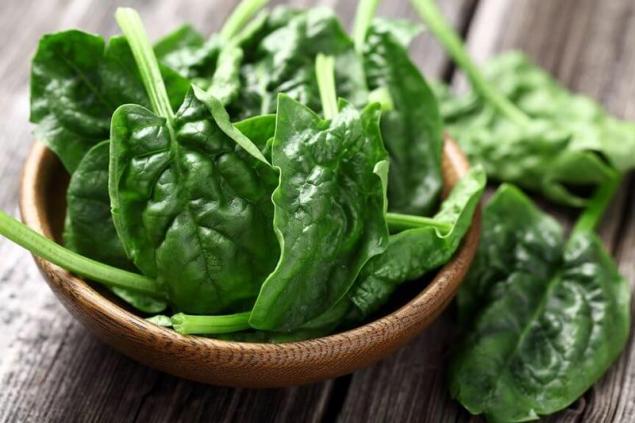
And another point: if we are talking about leafy vegetables, like spinach, or even about the herbs, such as parsley or chives, then boil them no need to, but blanching will help to give them all the same radical green, simultaneously revealing the flavor and saving on unnecessary bitterness. Another luminary of the world level, Thomas Keller prepares in his restaurant several aromatic oils with the blanched herbs. Blanching time, as in the case of vegetables is different:
P. S. And remember, only by changing their consumption — together we change the world! © Join us at Facebook , Vkontakte, Odnoklassniki
Source: arborio.ru/o-zelenyx-ovoshhax/

A large part of the sources describes the following conditions to preserve color of green vegetables:
- Vegetables must be washed thoroughly and remove all of the ugliness – on the bright green they will be especially noticeable.
- The water in which you cook vegetables, should be a lot – 6 times more in volume than the vegetables themselves.
- Water needs to be salted and boiling key. After adding vegetables to boiling water should not be interrupted.
- The pan during cooking cover to cover: it is believed that if the enzyme that breaks down chlorophyll, will not go along with steam, to achieve a green fail.
- Cook briefly, just a few minutes and the color will turn out how it should, and less nutrients in the water will go. The vegetable is ready when it is tender, but still slightly tingling. Cooking time for different vegetables varies.
- If you are going to serve the vegetables immediately – will put them into a bowl of ice water to immediately stop the heat treatment.
- When cooking for a few to preserve the color of vegetables is usually easier than when cooked in water – but if you overdo the vegetables on the ferry, they still darken.
- When cooking frozen vegetables, the water volume should be increased substantially as the temperature of the vegetables will significantly cool the water – and she, recall, they all have to boil.

Guided by these simple rules, green vegetables successfully cook more than one generation of cooks and Housewives around the world. But a tireless experimenter and rebel Heston Blumenthal did my research and came to the conclusion that most of the above conditions is no more than a myth.
To ensure that the vegetables kept green, water salting is not necessary. Well, I committed the cardinal sin is his statement. All in one voice say that salted water helps to retain the green color of vegetables, and anyone who puts this question, one should throw stones and not only.In life people are the key turning points. I confess that for me this turning point was cooking green beans. In the Orthodox culinary teachings, green vegetables should be submerged in plenty of boiling heavily salted water, so that added veggies do not stop the boil. My problem was that on a gas stove in my restaurant I couldn't boil enough water, and the beans had to cook up to eight servings at a time, otherwise the water stopped boiling, the pods soon “languished” than cooked, and took a nasty brownish shade.It is clear that I mean properly cooked green beans – with fresh, slightly herbaceous flavor, easy razzhevyvaniya, and not shiny green pods that are so undercooked that not just crunch, and “squeak” when you bite, in other words – half-baked.Cooking green beans became my obsession, and I decided to study the mechanics of cooking green vegetables. The first thing I noticed was that all the recipes were salt water as an absolute necessity to preserve the color, while not quite explaining why.The beans are not getting salt from cooking in salted water. The beans, always add salt after cooking. The only thing which came to my mind the explanation was that salt raises the boiling point of water.In the interesting book by Harold McGee (Harold McGee “On food and cooking methods: fundamentals and myths of the kitchen” On Food And Cooking The Science And Lore Of The Kitchen) says that there is an enzyme that destroys chlorophyll and therefore green. This enzyme becomes active in warm water and is destroyed by evaporation. I decided that the puzzle need added salt in the water is finally solved – salt raises the boiling point and helps to retain water in the boiling point when added to water the pods, thus giving the work an enzyme.For fun, I decided to measure the difference between the temperature of boiling salted water and unsalted water (for the record, I note that for boiling green vegetables salted usually always the same, at the rate of 40 grams of salt per liter). To my great surprise and disappointment, the boiling point of salt water is not much different from the boiling point of unsalted water. Once home I decided to try to boil green vegetables in unsalted water. I took the yellowed at the ends of the inflorescences a bunch of broccoli and boiled it in unsalted tap water. I even purposely overcooked broccoli, but it turned out that even this bundle of yellowed green part remained bright green. It became clear to me that it is necessary to find a scientist who is interested in cooking.In the end I found Peter Barham Peter Barham), a teacher of physics at the University of Bristol, author of the recently published book “the Science of cooking The Science Of Cooking).He confirmed that salt is really not needed to preserve green color of vegetables, but as it turned out, the most important is the quality of the water, in particular, the content of calcium. Calcium is the enemy of green vegetables; they lose their green color when a high level of calcium in the water. And as it turned out, the water in my house contain much less calcium than the water in my restaurant.So, if the water contains no more than 20 mg calcium per liter, and after adding green vegetables to boiling water it returns to the boiling point almost immediately, the vegetables will retain their green color (if there is no other way, you have to brew to buy mineral water with low calcium content). So the enzyme that destroys the chlorophyll that is in General innocent.Was dethroned and another culinary myth that when cooking the green vegetables pot in any case can not cover, otherwise the vegetables will lose their color. On the contrary, in a saucepan covered with a lid, the water after adding the vegetables will reach the boiling point faster.

And another point: if we are talking about leafy vegetables, like spinach, or even about the herbs, such as parsley or chives, then boil them no need to, but blanching will help to give them all the same radical green, simultaneously revealing the flavor and saving on unnecessary bitterness. Another luminary of the world level, Thomas Keller prepares in his restaurant several aromatic oils with the blanched herbs. Blanching time, as in the case of vegetables is different:
- Rosemary – 40 seconds
- Fennel – 15 seconds (I think, fennel fall into this category)
- Chives – not blanch, just hold for 2 minutes under hot water
- Parsley – 15 seconds
- Mint 15 seconds
- Thyme – 40 seconds
P. S. And remember, only by changing their consumption — together we change the world! © Join us at Facebook , Vkontakte, Odnoklassniki
Source: arborio.ru/o-zelenyx-ovoshhax/
5 "green" technologies, because of which we do not understand why petrol is still popular
In the Netherlands are testing the servers to heat homes






